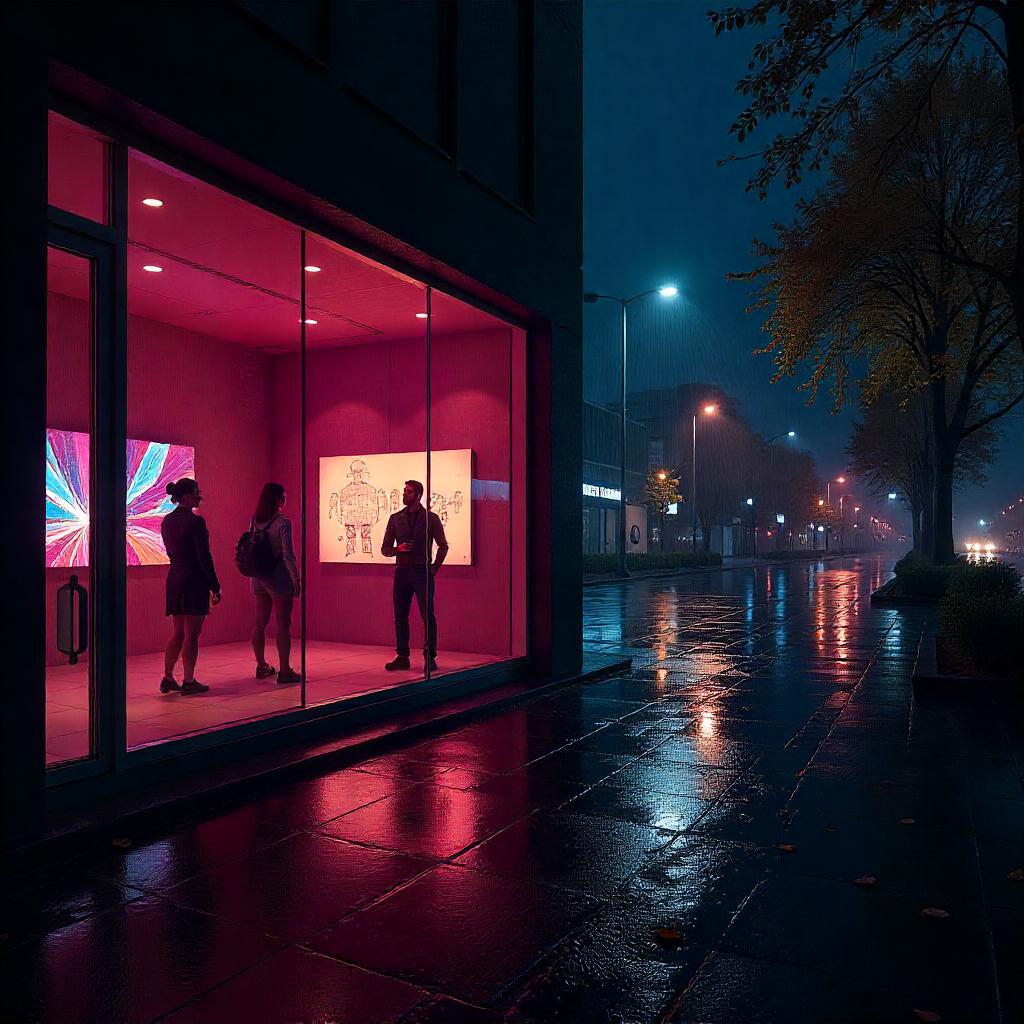The NFT market is cold. Global sales plummeted to $373 million in April 2025—a brutal 58% drop from December’s peak. Yet Polygon’s ecosystem exploded. Its NFT sales surged 52% in early 2025, hitting $2 billion all-time. This wasn’t random luck. One platform drove 90% of that growth: Courtyard NFT platform. Courtyard generated $277 million in lifetime sales by May 2025, rivaling giants like DraftKings Reignmakers ($287M). It defied the bear market. How? By anchoring digital ownership in the physical world through redeemable assets. Think rare Pokémon cards or ’53 Mickey Mantle rookies—vaulted, certified, and tokenized. For creators, this hybrid model isn’t just novelty. It’s survival. Courtyard NFT platform unlocks buyers traditional NFTs ignore: sports memorabilia collectors, vintage investors, tangible-asset traders. While others saw slumps, Courtyard creators averaged $89 per sale in May—a 242% jump since late 2024. Polygon’s low fees made this boom possible. But Courtyard NFT platform made it inevitable. Let’s break down why.
Market Context: NFT Downturn vs. Polygon’s Surge
The NFT market bled out in early 2025. Global sales crashed to $373 million in April—down 58% from December 2024’s $900 million peak. Ethereum, the once-dominant chain, saw sales drop 41% year-to-date. But Polygon laughed at gravity. While others collapsed, Polygon’s NFT sales grew every month from November 2024 to May 2025. Volume rocketed from $16.3M to $74.7M—a 358% surge. Unique buyers hit 134,000 in February 2025, smashing records . Courtyard NFT platform fueled this defiance. In April alone, it drove $64 million of Polygon’s $71 million sales. That’s 90% of the chain’s volume. No other project came close.
Token Performance Deep Dive
| Metric | Courtyard | Polygon Overall |
|---|---|---|
| Avg. Sale Price | $89 | $26 |
| 24H Volume | $786,000 | $1.4M |
| Floor Price | 0.0031 ETH ($8.57) | 0.0019 ETH ($5.20) |
| Unique Holders | 30,171 | 134,000+ |
This wasn’t luck. Courtyard NFT platform turned Polygon into an RWA (real-world asset) juggernaut. As traditional NFTs flatlined, tangible-backed digital assets thrived .
Courtyard: The RWA Powerhouse Reshaping NFT Economics
Courtyard NFT platform isn’t another PFP project. It’s a bridge between physical scarcity and blockchain liquidity. Here’s how it works:
The Hybrid Model
Physical collectibles (e.g., 1953 Mickey Mantle cards, 1st-edition Charizards) undergo professional authentication by PSA or Beckett. Assets move to Brink’s insured, climate-controlled vaults—costing 0.8% of asset value annually. Each item becomes a Polygon-based NFT. Owners trade instantly or “burn” the NFT to redeem the physical asset . This turns illiquid collectibles into 24/7 tradable assets. A $10,000 card gains Ethereum-level liquidity at $0.01 transaction fees.
Physical Asset Lifecycle
- Sourcing: Partner with certified graders (PSA/Beckett) for authenticity
- Vaulting: Brink’s handles global logistics and storage
- Tokenization: Mint NFTs with embedded redemption rights
- Redemption: Burn NFT for 7-day physical delivery
Market Dominance
In April 2025, Courtyard NFT platform accounted for:
- $64M of Polygon’s $71M sales (90% monthly volume)
- 24% of Polygon’s all-time NFT volume ($277M)
- 11,000+ daily transactions—11.39% of global NFT activity
Top-Performing Assets
Pokémon Sun & Moon Booster Boxes sold for $4,800 (NFT) vs. $3,200 (physical). 1953 Bowman Baseball Cards delivered 412% ROI since tokenization. 2022 Pokémon Promos saw 7,200+ transactions in May alone . Courtyard NFT platform proves real-world assets (RWAs) create sustainable demand. While Bored Apes dipped 34%, Courtyard collections surged 81% weekly.
Why Creators Are Migrating to Courtyard
NFT creators face shrinking margins elsewhere. Courtyard NFT platform reverses that. Here’s why migration spiked 217% in Q1 2025:
Premium Pricing
$89 Average Sale Price (May 2025) vs. Polygon’s $26 average. Real-world scarcity drives values 242% higher than digital-only NFTs. Example: Tokenized 1953 Mickey Mantle card sold for $12,400—physical market cap: $9,800 .
Broader Buyer Pool
Attracts traditional collectors (sports cards, luxury goods) + crypto-natives. 68% of Courtyard buyers self-identify as “physical-first” collectors. Result: Less reliance on volatile crypto whales .
Fee Efficiency
Polygon gas fees: $0.01 per transaction. Enables microtransactions (e.g., $5 card fractions) impossible on Ethereum ($50 fees) .
Regulatory Clarity
SEC closed its OpenSea investigation (Feb 2025), signaling RWA compliance. Physical backing reduces “security” classification risks .
Competitor Comparison
| Platform | Avg. Sale Price | Buyer Growth | Royalty Structure |
|---|---|---|---|
| Courtyard | $89 | ▲ 81.61% | 7.5% sales + 2.5% redemption |
| Guild of Guardians | $63 | ▲ 5.99% | 5% sales only |
| OpenSea (Ethereum) | $23 | ▲ 0.13% | 5-10% sales only |
Step-by-Step: How NFT Creators Can Leverage Courtyard
Courtyard NFT platform turns physical assets into premium NFTs. Follow this blueprint:
Phase 1: Asset Selection & Certification
Target High-Scarcity Items: Focus on authenticated collectibles (e.g., PSA-graded cards, signed memorabilia, limited sneakers). Grading boosts value 4.2× vs. raw assets. Avoid items under $200—tokenization costs outweigh benefits.
Phase 2: Vaulting & Tokenization
- Ship to Brink’s Vault: Courtyard handles insured logistics (0.8% asset value/year fee)
- Mint RWA NFTs: Use Courtyard’s dashboard; embed:
- High-res 360° scans
- Grading reports
- Storage location ID
- Set Redemption Terms: Buyers “burn” NFT for 7-day physical delivery
Phase 3: Pricing & Royalties
Premium Pricing Model:
| Asset Type | Physical Value | NFT Premium |
|---|---|---|
| Graded Sports Card | $5,000 | $6,200 (+24%) |
| Rare Sneakers | $2,300 | $3,100 (+35%) |
| Vintage Watches | $8,000 | $10,400 (+30%) |
Royalty Stacking: 7.5% secondary sales fee + 2.5% redemption fee. Earn when assets change hands and when collectors claim physical items.
Phase 4: Marketing to Hybrid Buyers
Target Communities:
- TCG subreddits (4.2M users)
- Sneakerhead Discord groups
- Luxury collector forums
Messaging Hook: “Own the digital, claim the physical—anytime.” Highlight asset insurance and 14-day authenticity guarantees. Courtyard NFT platform converts dormant assets into liquid revenue. Start small: Tokenize 1 high-value item to test demand.
Courtyard vs. Traditional NFT Platforms: A Creator Comparison
Choosing where to mint matters. Courtyard NFT platform fundamentally alters creator economics.
| Metric | Courtyard (Polygon) | Traditional Platforms (Ethereum) |
|---|---|---|
| Avg. Sale Price | $89 | $20–$30 |
| Transaction Fees | <$0.01 | $5–$50 (gas) + 2.5% platform fee |
| Monthly Buyer Growth | ▲ 81.61% | ▲ 0.13% |
| Secondary Royalties | 7.5% sales + 2.5% redemption | 5–10% sales only |
| Key Audience | 68% traditional collectors | 92% crypto-natives |
Why This Gap Exists
Real-World Scarcity > Digital Hype: Physical assets (e.g., vintage cards) have inherent value. Digital PFPs rely purely on speculation. Sports memorabilia markets grew 8% annually since 2000. NFT collectibles fell 60% in 2024 .
The Hidden Cost of “Traditional”
Ethereum’s $37 average transaction fee kills microtransactions. Courtyard NFT platform enables fractionalized RWAs (e.g., 1/100th of a $10K card). This unlocks volume traditional platforms can’t touch. Bottom line: Courtyard NFT platform dominates a new category.
Future Outlook: RWA as the NFT Growth Engine
The NFT market pivots fast. Real-world assets aren’t a niche. They’re the engine. Consider:
- $21.2B in tokenized RWAs now live on-chain (excludes stablecoins)
- 97,000+ RWA holders emerged in 2025—up 28,000% YoY
- Courtyard NFT platform proves this is revenue, not hype
Why RWA NFTs Will Dominate
Inflation Hedge Demand: Physical assets (gold, art, collectibles) outperform crypto in recessions. RWAs merge tangible safety with blockchain efficiency. Institutional Adoption: BlackRock tokenized $240M in treasury bonds on Polygon in March 2025. The infrastructure is battle-tested . Regulatory Green Lights: SEC’s February 2025 guidance exempted physical-backed NFTs from securities rules. Pure-digital NFTs lack this shield .
Polygon’s Winning Infrastructure
| Feature | Polygon Advantage | Ethereum/Solana |
|---|---|---|
| Gas Fees | $0.0001 per transaction | $1.50–$35 |
| EVM Compatibility | Seamless creator migration | Native (ETH) / Non-EVM (SOL) |
| RWA Focus | Courtyard NFT platform, Landbox | Limited |
Creator Opportunities
Fractionalize High-Value Assets: Split a $500K Banksy print into 10,000 NFTs. Courtyard handles custody; you capture micro-investors. Cross-Chain Liquidity: Deploy RWA NFTs on Polygon, then bridge to Immutable for GameFi utility (e.g., redeemable in-game items). Hybrid Collections: Pair digital art NFTs with physical prints. Redeemable via Courtyard NFT platform’s vault system. The data is clear: RWAs drove 74% of Polygon’s Q1 2025 growth. Ignoring this shift risks irrelevance.
Seizing the RWA Revolution
The NFT winter froze out weak projects. Yet Courtyard NFT platform ignited Polygon’s 52% sales boom. This isn’t luck. It’s validation: real-world assets are NFT 3.0. For creators, the implications are urgent:
- Premium Buyers Await: Tap into 68% non-crypto collectors paying $89+ per asset—242% above digital-only averages
- Demand Outlasts Volatility: Sports memorabilia grew 8% annually for 20 years. RWAs thrive when crypto dips
- First-Movers Win: RWA NFT trading volume exploded 28,000% YoY. Delaying risks obsolescence
Your Action Plan
- Audit Physical Assets: Identify high-value, authenticatable items (graded cards, art, collectibles)
- Partner with Graders: Secure PSA/Beckett certifications to boost value 4.2×
- Tokenize via Courtyard: Use Brink’s vaults ($0.008 per $1 value/year) and mint in <1 hour
The Courtyard NFT platform merges tangible scarcity with digital liquidity. It turns collectors into loyal holders. While others chase speculative hype, you’ll build sustainable revenue. Start small. Scale fast. The bridge between physical and digital is open—cross it now.
“The next billion NFT users won’t come for JPEGs. They’ll come for real-world value.” —Courtyard Co-Founder, May 2025





